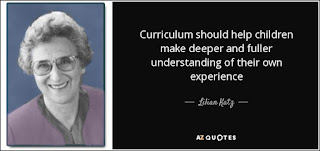UNIT 5- ELEMENTS OF CURRICULUM

This reflection contains a quick summary of the lessons taught in the fifth unit-Curriculum Study. Overall, the lessons were instructive and helpful because they covered the major curricular topics that we as soon-to-be teachers need to be aware of. It is crucial for field-based teachers to be aware of the many curriculum components, how they relate to one another, and the advantages of designing an accurate and efficient curriculum. Learning the curriculum's components has improved my comprehension of purposes, aims, goals, and outcomes. I understood the aims, which are an extensive explanation of intentions expressed in straightforward language. I also understood that goals are derived from aims and provide an accurate and thorough picture of the program. After attending this session, we got an idea on how lessons can be planned with an appropriate aim, goal or an objective(s), which are very crucial to have an effective outcome at the end. The pedagogical approach objectives w...



